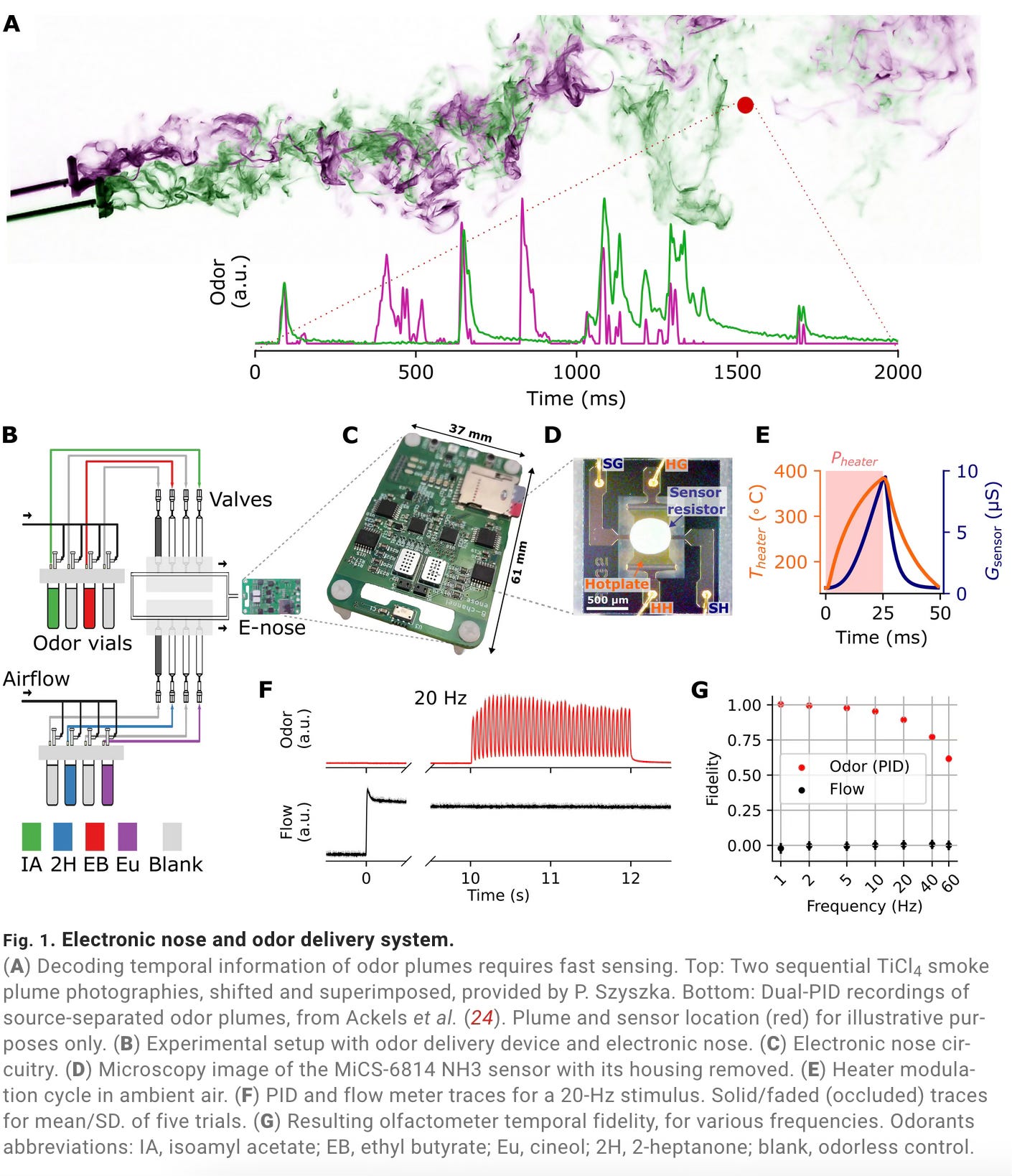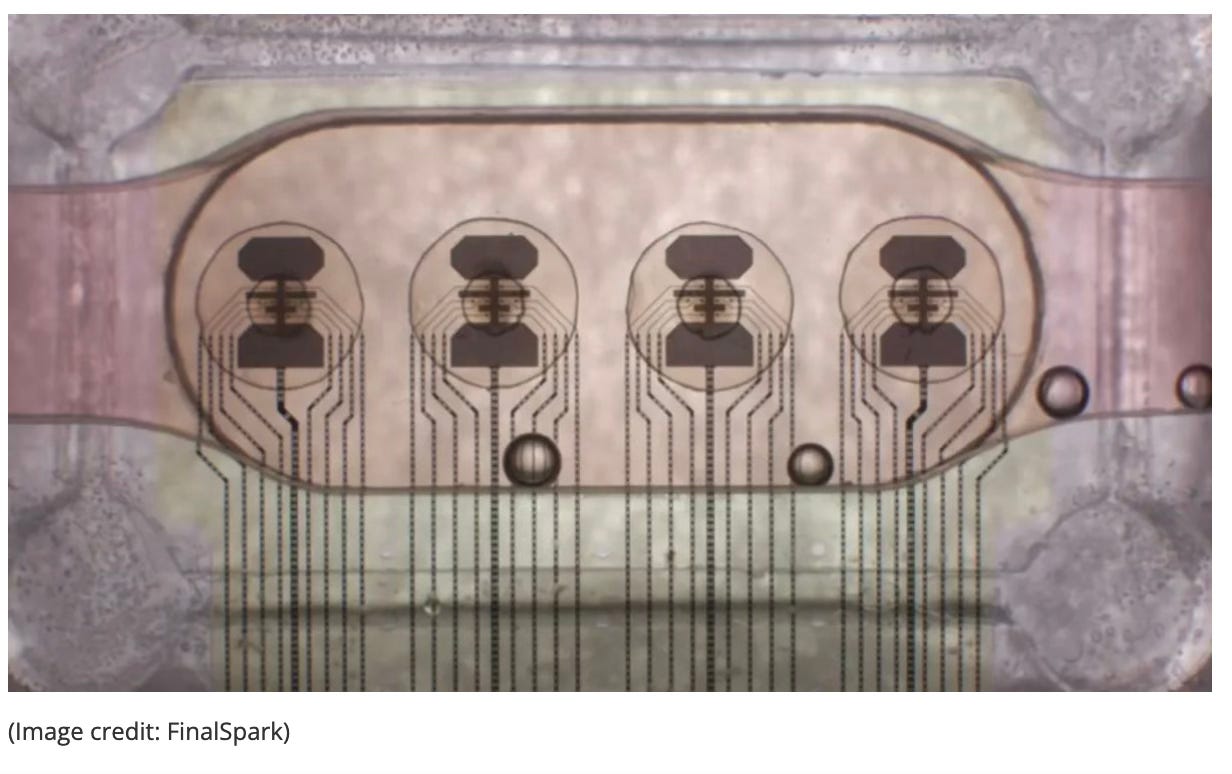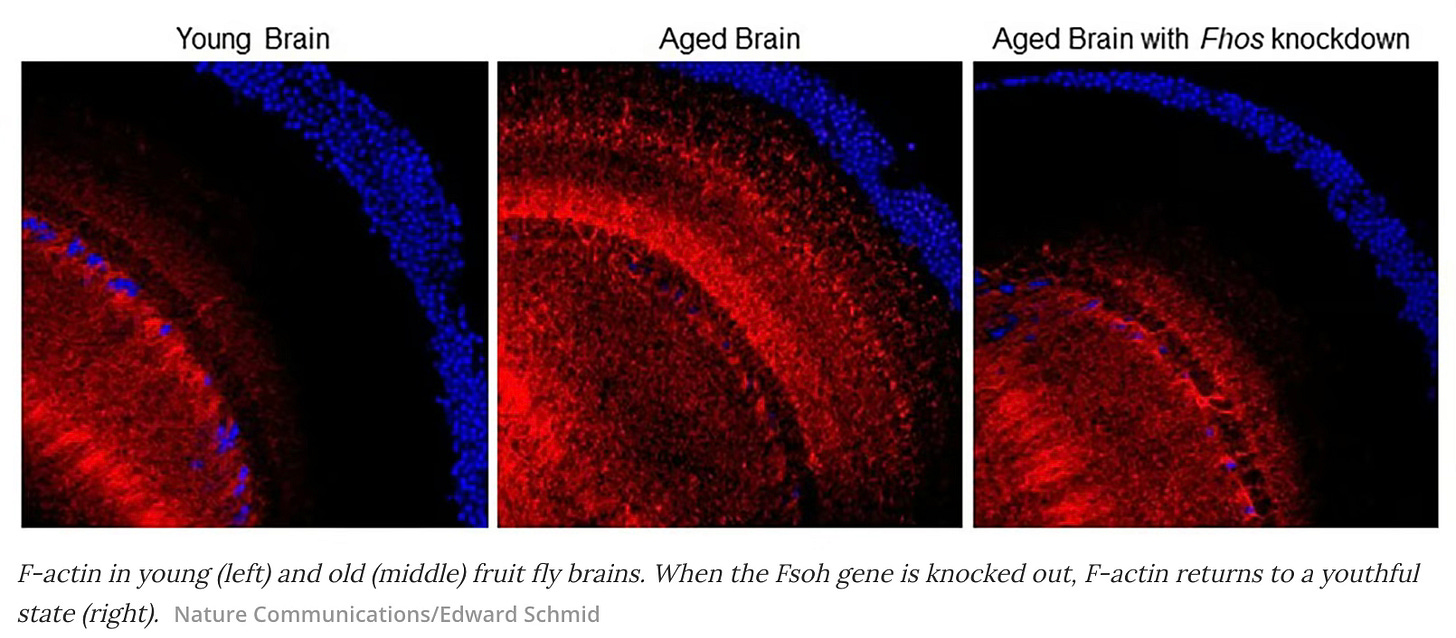This week we discover a new electronic nose that can smell as well as a dog. We investigate the human brain bioprocessors that we encountered last week. We examine a new breakthrough that might help us extend our healthspan and finally we look into a planned automated cargo transport system in Japan.
Electronic Noses
We have spoken about electronic noses before however they were for specific applications. Now a team at Western Sydney University have developed an electronic nose that can detect scents as well as a dog or a mouse.
Animals can sense smell very quickly. It is an essential survival technique. The team set out to replicate this ability in an electronic nose. The reason animals need such an acute sense of smell is due to the way that odors move through air. Air movements create a highly chaotic environment where odors travel in irregular plumes that can be extremely brief and spaced out over time.
Animals need to understand these odor plumes as each encounter carries vital information for survival. Animals analyze the timing and frequency of these odor bursts in order to estimate the how far they are from the source. Subtle clues allow animals to make decisions about where to find food, avoid predators or locate mates. Their sensory systems are attuned to picking up the rapid changes in the odor landscape.
The electronic nose is built on a multi layer circuit board a little smaller than a credit card. The device is equipped with metal-oxide gas sensors in addition to temperature and humidity sensors. the device can sample and control these sensors extremely quickly. It then uses custom algorithms and processing to identify smells. The sensors work by changing their electrical properties based upon how different gases react with an oxide layer on the surface. The sensors are heated to several hundred degrees to make them sensitive enough to respond rapidly.
The electronic nose could be used for bushfire detection via drones that patrol the bush. Fires burning below the forest canopy or behind clouds can be missed by other detection methods. In disaster zones the nose could assist search and rescue operations by rapidly scanning environments for human scents. The electronic nose might one day be suitable for truffle hunting. Currently truffle hunting pigs are used to seek out this delicacy.
Human Brain Bioprocessor
Last week we briefly mentioned the world’s first bioprocessor. A Swiss startup, FinalSpark, has developed an online platform with remote access to 16 human brain organoids. The platform consumes a million times less power than traditional digital processors.
The platform uses a wetware architecture, a mixture of hardware, software and biology. Four Multi Electrode Arrays (MEA) house the living tissue which are 3D cell masses of brain tissue. Each MEA holds 4 organoids interfaced by 8 electrodes used for stimulation and recording. Data goes to and fro via digital analog converters. A software stack allows researchers to input data variables and read and interpret processor output.
FinalSpark has given access to its’ platform to nine institutions to help spur bioprocessing research and development. The hope is that this collaboration will lead to the creation of the world’s first living processor.
Currently each organoid only lives for 100 days in comparison to silicon chips which can last decades. At the moment the system is only appropriate for short term projects
Extending Healthspan
Healthspan is the part of our lives where we can live a normal healthy life as opposed to lifespan which represents how long we live in total. A team at UCLA have identified how a common cellular protein affects aging. They have tweaked the genes that produce the protein in fruit flies extending health span by 25% to 30%. The hope is to be able to open this door to healthier aging in humans.
A cytoskeleton provides most cells with their shape, structure and internal organization. The cytoskeleton relies on filamentous (F-actin), a type of actin protein to perform this function. It forms networks of thin flexible filaments that affect the shape, stiffness and movement of cells. Aging alters the F-actin expression, disrupting the cytoskeleton’s functions. This can lead to age related disease.
The team found that when F-actin accumulates in the brain it hinders cellular cleanup and leads to the build up of waste that decreases neuronal functioning and contributes to cognitive decline. Tweaking some genes in fruit flies prevented the build up of F-actin and extended the fly’s healthspan by around 30%.
The challenge will be translating these results to humans and developing a safe method for action. The study improved cognitive and gut function, activity level and overall healthspan of fruit flies. The hope is to one day be able to do the same for humans.
Automated Cargo Transport
Like many countries Japan is suffering from a shortage of truck drivers as the population ages. The Government is now planning for an automated cargo transport corridor between the two largest cites, Tokyo and Osaka.
The system is essentially a series of big wheels boxes moving along a three lane corridor in the middle of a big highway. It is also called an auto flow road. The boxes measure 180 centimetres in height (just under 6 feet) and 110 centimeters in width and length. The idea is that the transport between the major hubs is automated with human drivers still doing the last mile deliveries (however this will also be automated one day).
The coming retirement of truck drivers will reduce the overall transport capacity in Japan by 34% by 2030. Trucks carry about 90% of Japan’s cargo. An alternative is needed. The system may be extended to other routes if successful.
Paying it Forward
If you have a start-up or know of a start-up that has a product ready for market please let me know. I would be happy to have a look and feature the startup in this newsletter. Also if any startups need introductions please get in touch and I will help where I can.
If you have any questions or comments please comment below.
I would also appreciate it if you could forward this newsletter to anyone that you think might be interested.
Till next week.






